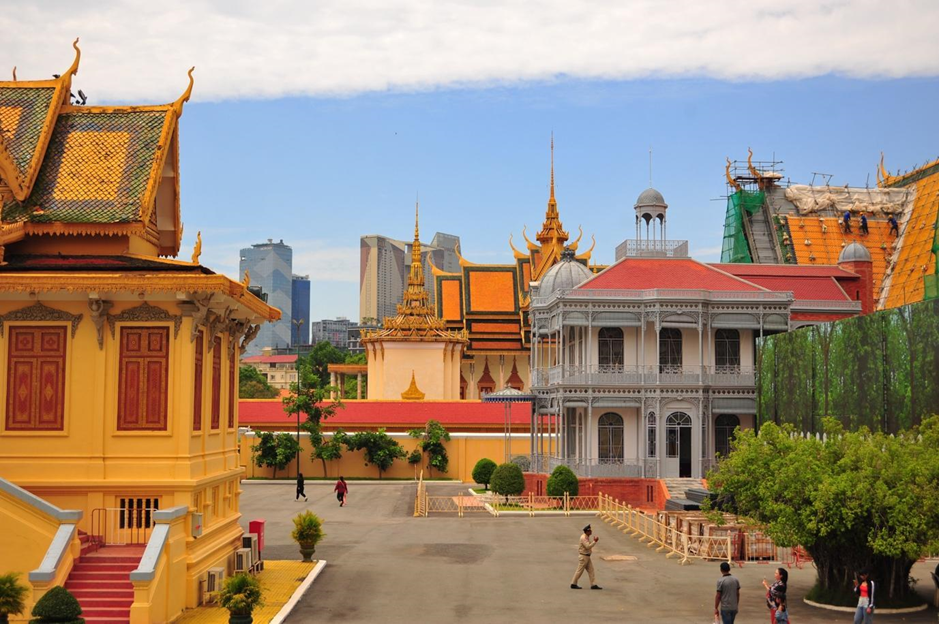When Cambodia’s Memory Fell Silent, and Came Back Into the Light
- Arnaud Darc

- Oct 6
- 2 min read
Saturday morning at the SOSORO Museum in Phnom Penh, I stood before a set of fragile glass negatives. Backlit and enlarged, they revealed something thought lost forever: the vanished inner murals of the Silver Pagoda.

For most visitors, the Silver Pagoda is known for the vast cloister paintings of the Reamker, Cambodia’s version of the Ramayana. Stretching more than 600 meters, these murals, painted in 1903–1904 by a team led by Oknha Tep Nimit Mak, remain a landmark of Khmer art. They narrate divine kingship and link the monarchy to the grandeur of Angkor.
What few realize is that the pagoda once told two stories, not one. The outer cloister carried the Reamker, but the inner sanctuary — the vihāra — was originally covered with Buddhist narratives: the Dasajātaka, recounting the Buddha’s previous lives, and the Pathamasambodhi, the biography of his final awakening. Together they formed a double program. Outside, the epic of kingship; inside, the scriptures of salvation.
That balance was lost in 1962, when the deteriorating wooden structure was dismantled and rebuilt in concrete under Prince Norodom Sihanouk’s modernization drive. The murals were erased, the walls painted plain red, and within a decade of political upheaval, all trace of the interior cycle disappeared. For sixty years, scholars assumed it was gone forever.
The negatives now on view at SOSORO change that story. Discovered in the 1980s by Princess Norodom Marie and later identified by EFEO scholar Olivier de Bernon, they document nearly half of the lost cycle. The scenes are vivid: elephants and armies, ritual assemblies, celestial battles, the earth goddess wringing her hair to sweep away Māra’s demons. They show a Cambodia where Buddhist orthodoxy and royal cosmology coexisted in a single sanctuary.
This rediscovery matters for more than art history. It reminds us how fragile heritage truly is. Murals disappear not only through war and neglect, but through the well-intentioned drive to modernize. A renovation in 1962 silenced the Buddhist half of the pagoda’s message. Today, by chance and preservation, those voices return.
The lesson extends beyond the Silver Pagoda. Hundreds of pagodas once carried painted cycles that blended Jātakas, local epics, and cosmological maps. Many have been lost to time, cement, or repainting. Each rediscovery, whether through a box of negatives or a surviving fragment, is not nostalgia but a call to care for what remains.
Cambodia’s identity has always been layered: kingship and dharma, epic and scripture, Angkor and modernity. To see those lost murals again, even as photographs, is to recover that duality. What survives in images must now inform how we protect the heritage still standing in monasteries across the country.
At SOSORO, the negatives are called Into the Light. That title feels precise. They pull forgotten memory out of darkness, back into the public eye. They show us not only what once adorned the walls of the royal vihāra, but also what is at stake if preservation lags behind change.
Heritage is fragile, but not irretrievable. Sometimes it waits in a forgotten box, until someone opens the lid.
Thank you! Serey Chea & Blaise Kilian







Comments